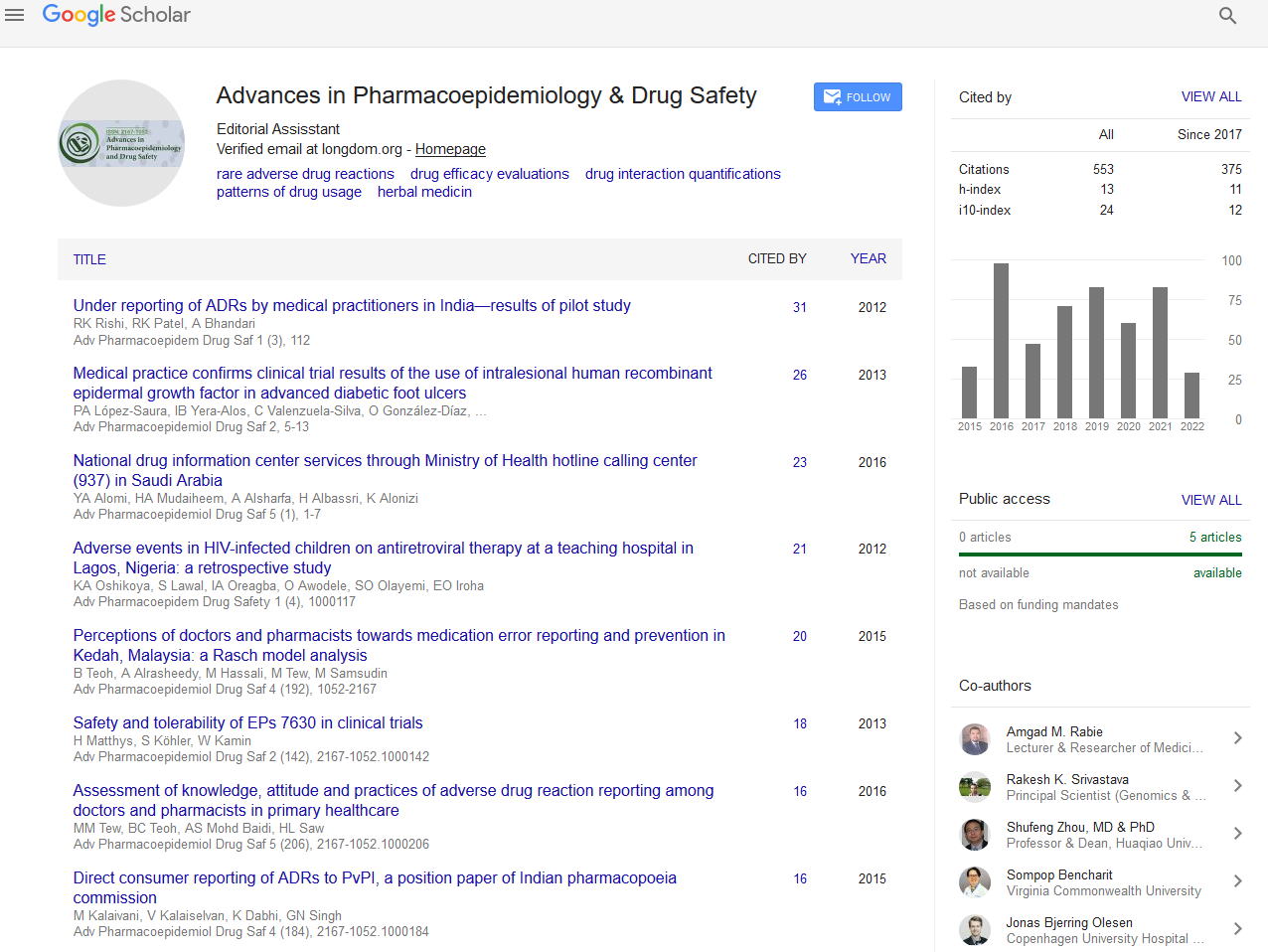Indexed In
- Open J Gate
- Genamics JournalSeek
- Academic Keys
- JournalTOCs
- RefSeek
- Hamdard University
- EBSCO A-Z
- SWB online catalog
- Publons
- Geneva Foundation for Medical Education and Research
- Euro Pub
- Google Scholar
Useful Links
Share This Page
Journal Flyer

Open Access Journals
- Agri and Aquaculture
- Biochemistry
- Bioinformatics & Systems Biology
- Business & Management
- Chemistry
- Clinical Sciences
- Engineering
- Food & Nutrition
- General Science
- Genetics & Molecular Biology
- Immunology & Microbiology
- Medical Sciences
- Neuroscience & Psychology
- Nursing & Health Care
- Pharmaceutical Sciences
Abstract
A Review of Safety Data from Spontaneous Reports on Marketed Products Containing Tramadol and Celecoxib: A Vigibase Descriptive Analysis
Vaqué A, Sust M, Gascón N, Puyada A and Videla S
Background: The concomitant administration of opioids and non-steroidal anti-inflammatory drugs is used to manage pain in clinical practice, given their synergistic analgesic effect. Among their possible combinations, tramadol and celecoxib are routinely used. The aim of this study was to explore the safety profile of tramadol and celecoxib administered individually compared to their concomitant administration in clinical practice.
Methods: Retrospective analysis of adverse-drug-reactions from the safety database Vigibase, The WHO global individual case safety report database system. A case was defined as an adverse-drug-reaction included in a report of Vigibase between January 2000 and March 2012. Three groups were studied: ‘tramadol-no-celecoxib’ (tramadol was only reported as suspected or interacting drug), ‘celecoxib-no-tramadol’ (celecoxib was only reported as suspected or interacting drug) and ‘celecoxib+tramadol’ (both drugs co-administered and reported as suspected or interacting drug). MedDRA dictionary was used to code adverse-drug-reactions. Reporting proportions were calculated as the number of adverse-drug reactions of a given type divided by the overall total number of reported adverse-drug-reaction in each drug-group.
Results: Reporting proportions for global profile, and for each studied group of adverse-drug-reaction, were lower for the concomitant administration than for each individual drug, specifically for the drug (either tramadol or celecoxib) primary involved in the particular adverse-drug-reaction. Therefore, no safety signals were found for ‘gastrointestinal bleeding’ and ‘gastrointestinal signs and symptoms’; ‘cardiovascular’ and ‘cerebrovascular events’
(related to ‘ischemic and embolic-thrombotic events’); ‘renal’ and ‘renovascular’ events (including cardiac failure related events); neither for ‘central nervous system’ effects; neither for ‘respiratory depression’; ‘development of tolerance with repeated administration’ (including abuse/dependence/withdrawal reported events); ‘hepatic disorders (drug-related)’; ‘skin events’; and neither for the most frequent preferred terms: ‘nausea’, ‘vomiting’, ‘constipation’, ‘myocardial infarction’ and ‘hypertension’.
Conclusion: Based on reporting proportions, no trend was observed to an increased risk for any specific potential safety concern when both tramadol and celecoxib, are administered concomitantly.


